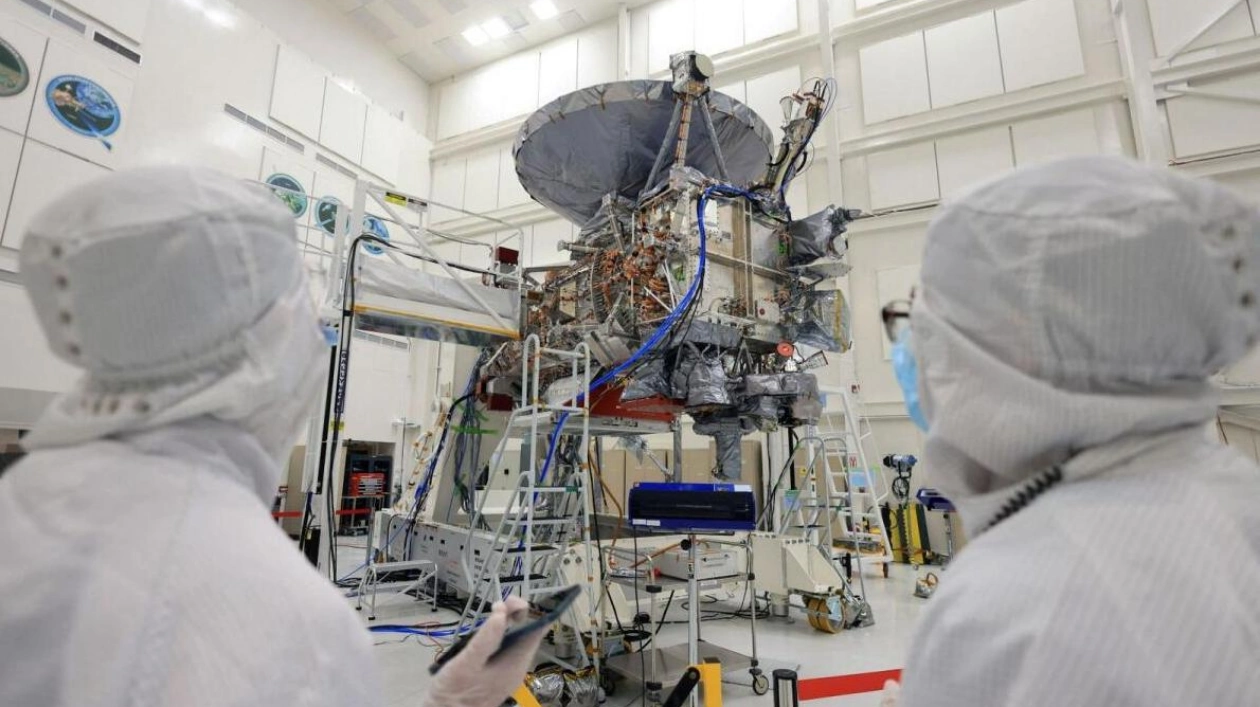The Europa Clipper spacecraft, currently under construction and undergoing testing at the Jet Propulsion Laboratory in Pasadena, California, was showcased during a media tour on April 11, 2024. — Reuters
Is there another place in our solar system capable of supporting life? A significant NASA probe is set to launch on Monday, embarking on a five-and-a-half-year journey to Europa, one of Jupiter's moons, to initiate a detailed exploration aimed at uncovering potential life-supporting conditions. The Europa Clipper mission will enable the US space agency to gather new insights about the moon, which scientists speculate may harbor an ocean of liquid water beneath its icy exterior. The launch is planned for "no earlier than" Monday, October 14, from Cape Canaveral in Florida, utilizing a robust SpaceX Falcon Heavy rocket, according to NASA's statement.
"Europa is one of the most promising candidates for extraterrestrial life beyond Earth," stated NASA official Gina DiBraccio during a recent news conference. While the mission does not directly seek signs of life, it aims to determine if Europa possesses the essential elements that could support life. If such conditions are confirmed, a subsequent mission would be required to detect any potential life forms. "Unlike Mars, which might have been habitable billions of years ago, Europa offers the opportunity to explore a world that could be habitable today," explained Europa Clipper program scientist Curt Niebur.
The probe, the largest ever designed by NASA for interplanetary missions, spans 30 meters when its extensive solar panels, designed to harness the faint light available at Jupiter, are fully deployed. Although Europa has been known since 1610, the first detailed images were captured by the Voyager probes in 1979, revealing enigmatic reddish lines across its surface. NASA's Galileo probe, which visited in the 1990s, strongly suggested the presence of an ocean beneath Europa's ice. This time, the Europa Clipper will be equipped with advanced instruments, including cameras, a spectrograph, radar, and a magnetometer to measure magnetic forces, aiming to analyze the structure, composition, and depth of Europa's icy surface, as well as the salinity of its ocean and the interaction between the ice and water.
The mission's objective is to ascertain if the three fundamental ingredients for life—water, energy, and specific chemical compounds—exist on Europa. If these conditions are met, primitive bacteria could potentially thrive in the ocean, according to Bonnie Buratti, the mission's deputy project scientist. However, such bacteria would likely be too deep for the Europa Clipper to detect. Should Europa prove uninhabitable, it would raise significant questions about previous assumptions and the absence of life-supporting conditions.
The probe will traverse 2.9 billion kilometers en route to Jupiter, with arrival anticipated in April 2030. The primary mission will extend for an additional four years, during which the probe will conduct 49 close flybys of Europa, approaching as near as 25 kilometers to the surface. Each pass will expose the probe to intense radiation equivalent to several million chest X-rays. Over 4,000 individuals have contributed to the $5.2 billion mission over the past decade, with NASA asserting that the investment is justified by the critical data the mission will gather.
If our solar system indeed hosts two habitable worlds (Europa and Earth), the implications for the billions of other solar systems in the galaxy are profound, according to Niebur. "Even setting aside the question of life on Europa, the mere exploration of habitability opens a vast new frontier in the search for life in the galaxy," he added. The Europa Clipper will operate concurrently with the European Space Agency's (ESA) Juice probe, which will study two other Jupiter moons—Ganymede and Callisto.






